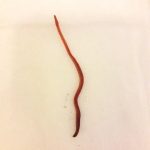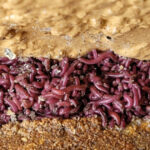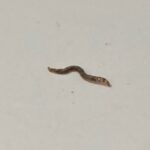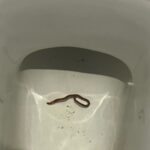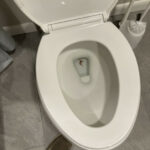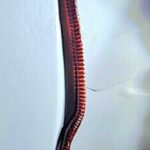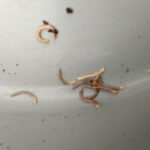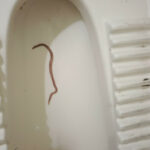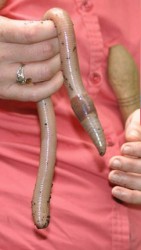
The annelids are a large phylum of segmented worms; consequently, annelids are commonly called simply “segmented worms.” (They are also, by the way, called “ringed worms,” as the worms’ segmented bodies often make them look like they are wrapped in small rings.) There are over 17,000 species in the annelid phylum, according to recent research, and while this is far less diverse than the phylum Nematoda, which is estimated to have approximately 1,000,000 species, the annelids are still extremely diverse relative to other species of animals.
Some of the most common worms are in the annelid phylum, most notably the earthworm, but ragworms and leeches are a part of this phylum too. Many science textbooks still break annelids into the following divisions: one, polychaetes, which includes virtually all of the marine annelids; two, oligochaetes, a group that includes earthworms; and three, leech-like species. However, research dating back to 1997 has radically complicated this view – for example, the leach-like annelids are now regarded as a subgroup of the oligochaetes – leading to new classification schemes that are still being worked out.
Annelids live in many different environments that differ substantially from one another. Many are found in marine environments, ranging from hydrothermal vents to tidal zones, but a wide range of species also live in freshwater. Given that earthworms are annelids, clearly not all annelids live in water, although even those that live on land require moist environments, or else they will dry out and perish. Annelids are also known to live in environments that keep them safe, like chasms in rocks and muddy areas. Perhaps most interesting of all, annelids sometimes live in other invertebrate animals, like sponges, and some even live in cylinders of their own creation; these types of worms (e.g., calcareous tube worm) secrete materials around their bodies that form into tubes. The parenthetically noted calcareous tube worm discharges a calcium carbonate tube, for example.
As for the structure of the annelids themselves, they have (as we previously mentioned) segmented bodies. Each segment has a body cavity surrounded by the body walls that houses its internal organs. The body is made of muscles and rigid hairs; the former primarily help with movement, including swimming and crawling on the ground, while the latter are often used to grip sand and dirt. These small hairs can also help keep worms in their tubes.
Although annelids are very simple animals, they nevertheless have a nervous system, a digestive system, and a circulatory system. The nervous system is comprised of tentacles, taste buds, and very simple eyes. (Yes, worms can see…kind of.) The digestive system of annelids is also very simple, as it is merely a gut that runs along the worms’ undersides. The circulatory system, as its name implies, circulates; in particular, it circulates the worm’s blood, which can be a reddish or greenish color (or even no color at all), around its body. It is in part this simple body design, characteristic of lots of types of worms, that allows annelids to live in many different environments, including many of our lawns, that favorite place of earthworms.
All About Worms is always free, always reader-supported. Your tips via CashApp, Venmo, or Paypal are appreciated! Receipts will come from ISIPP Publishing.



